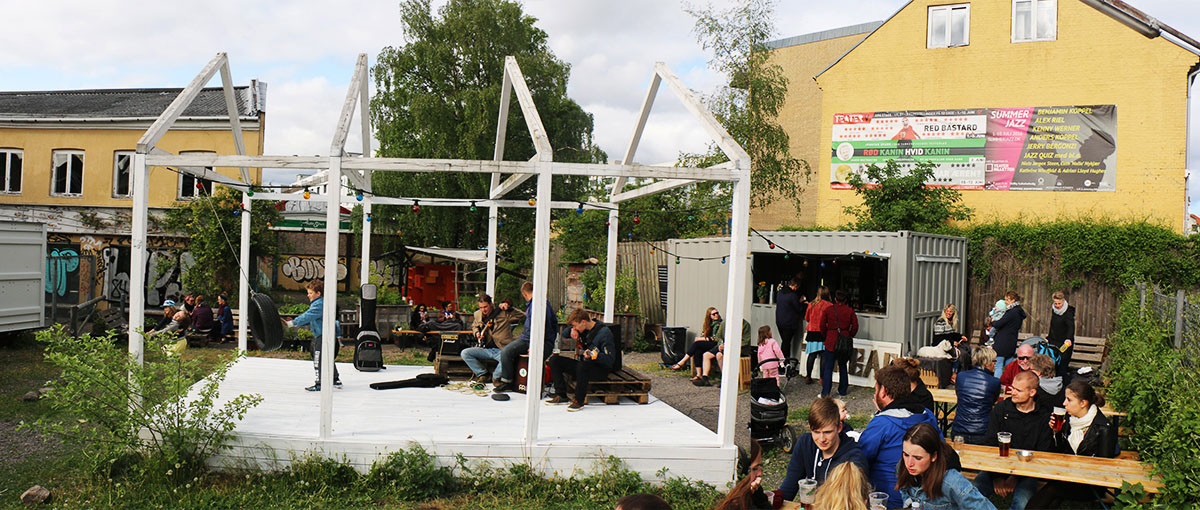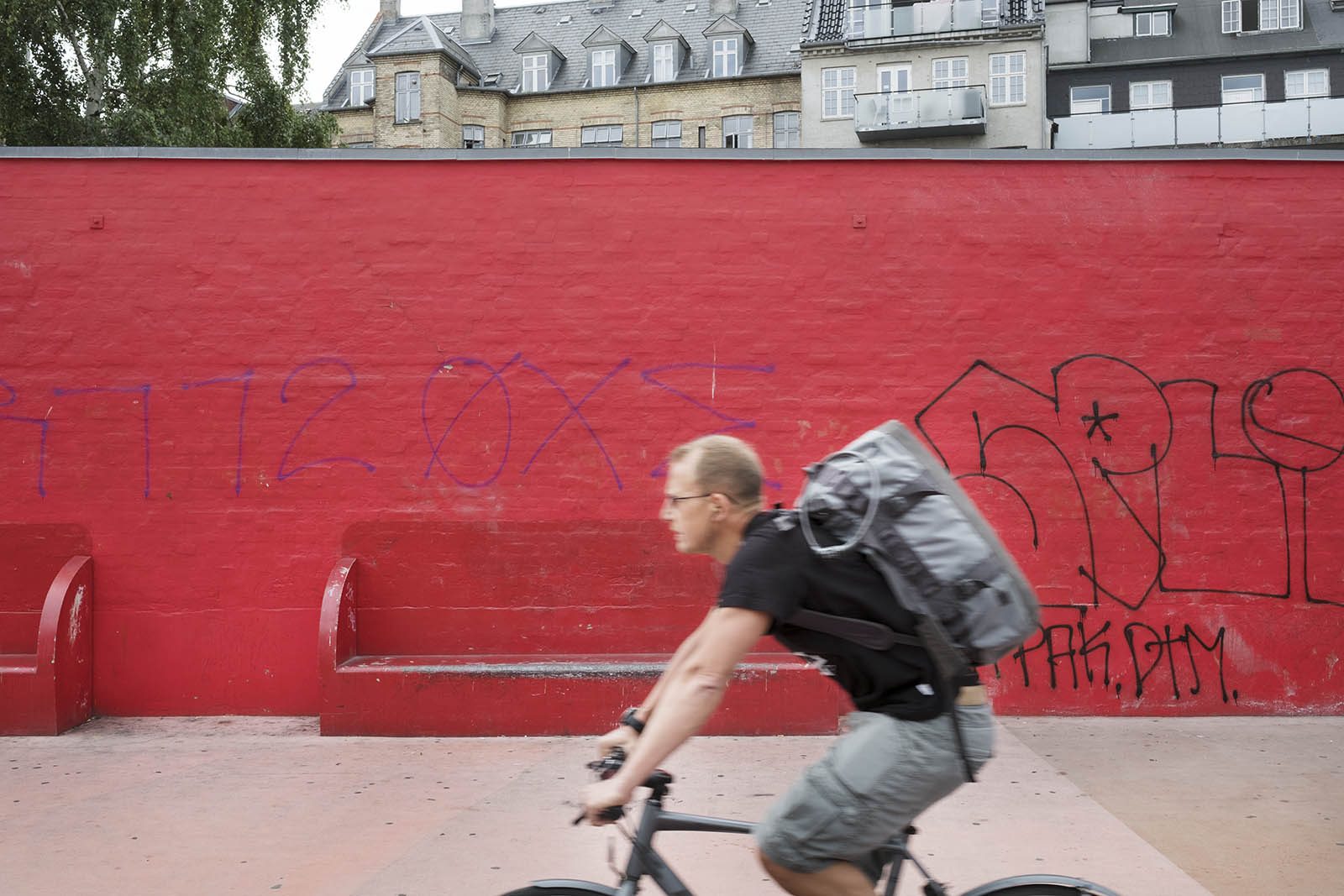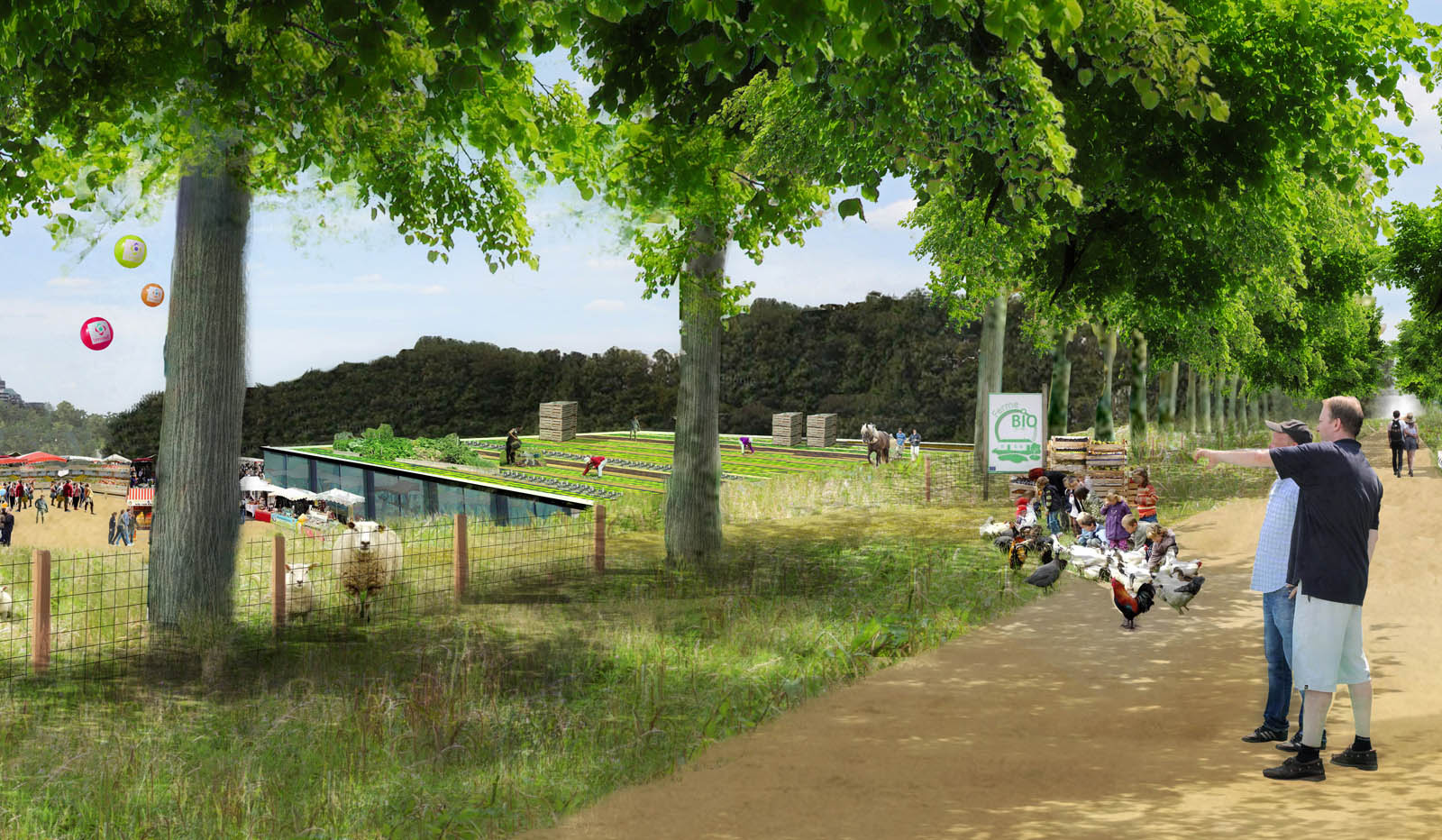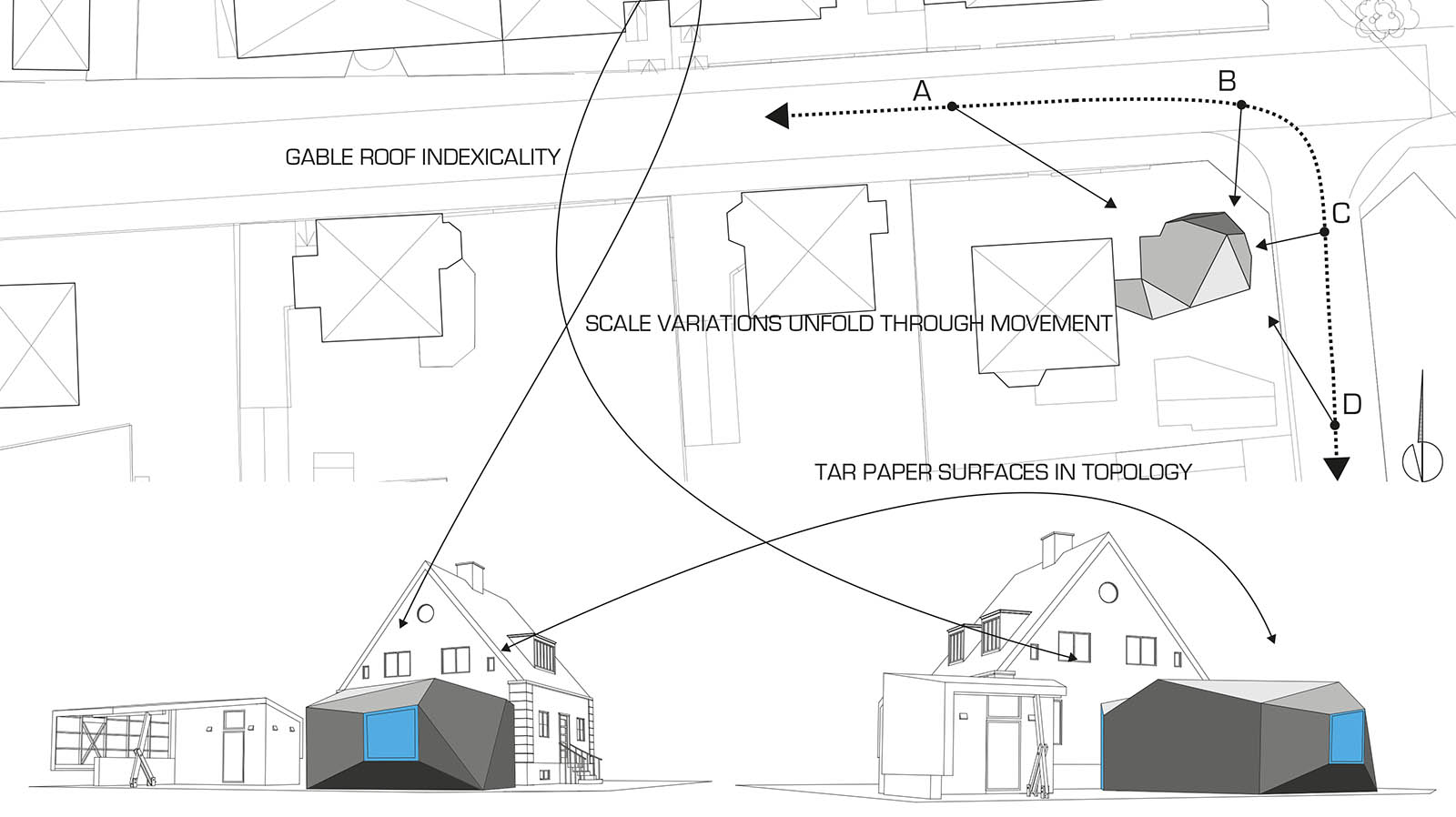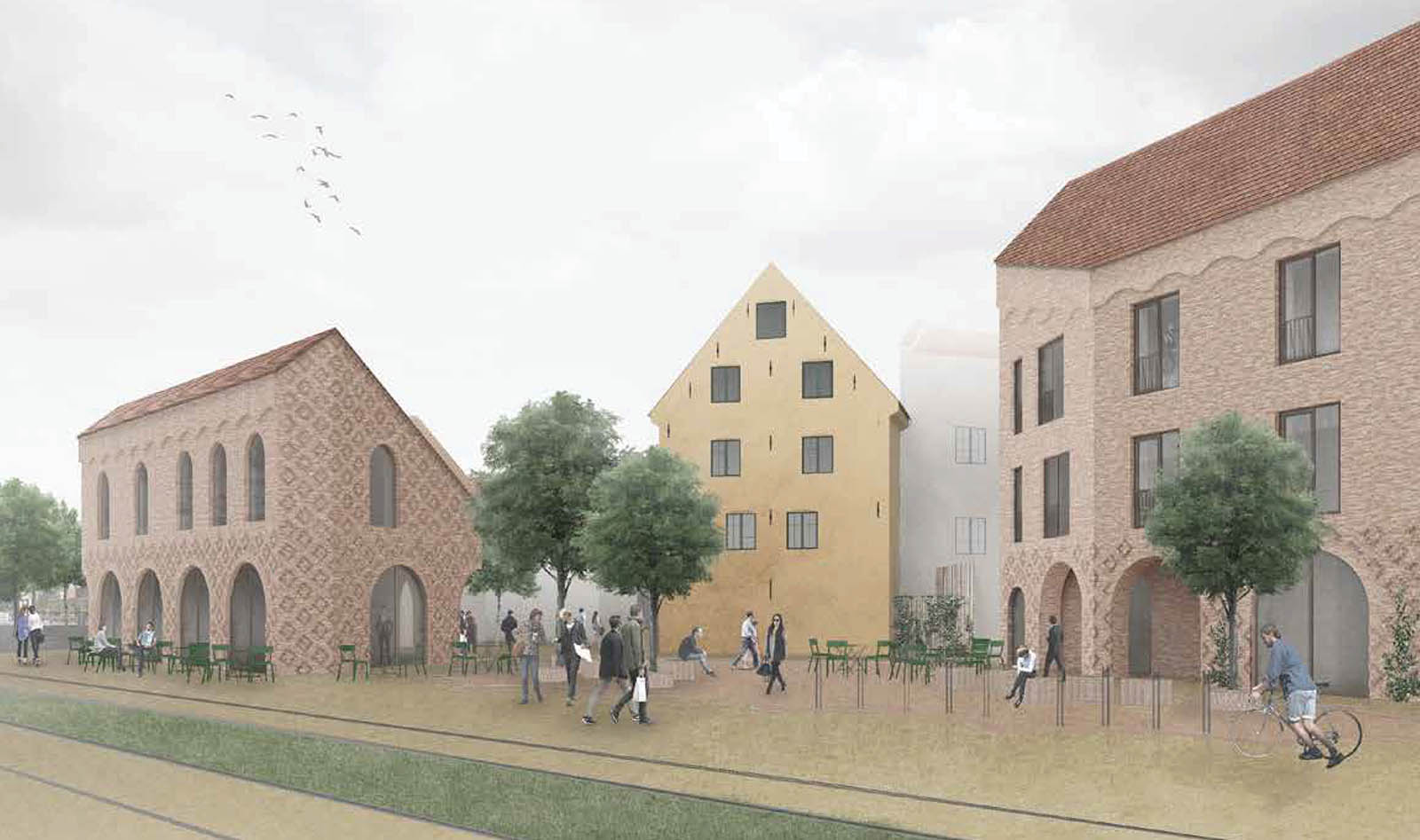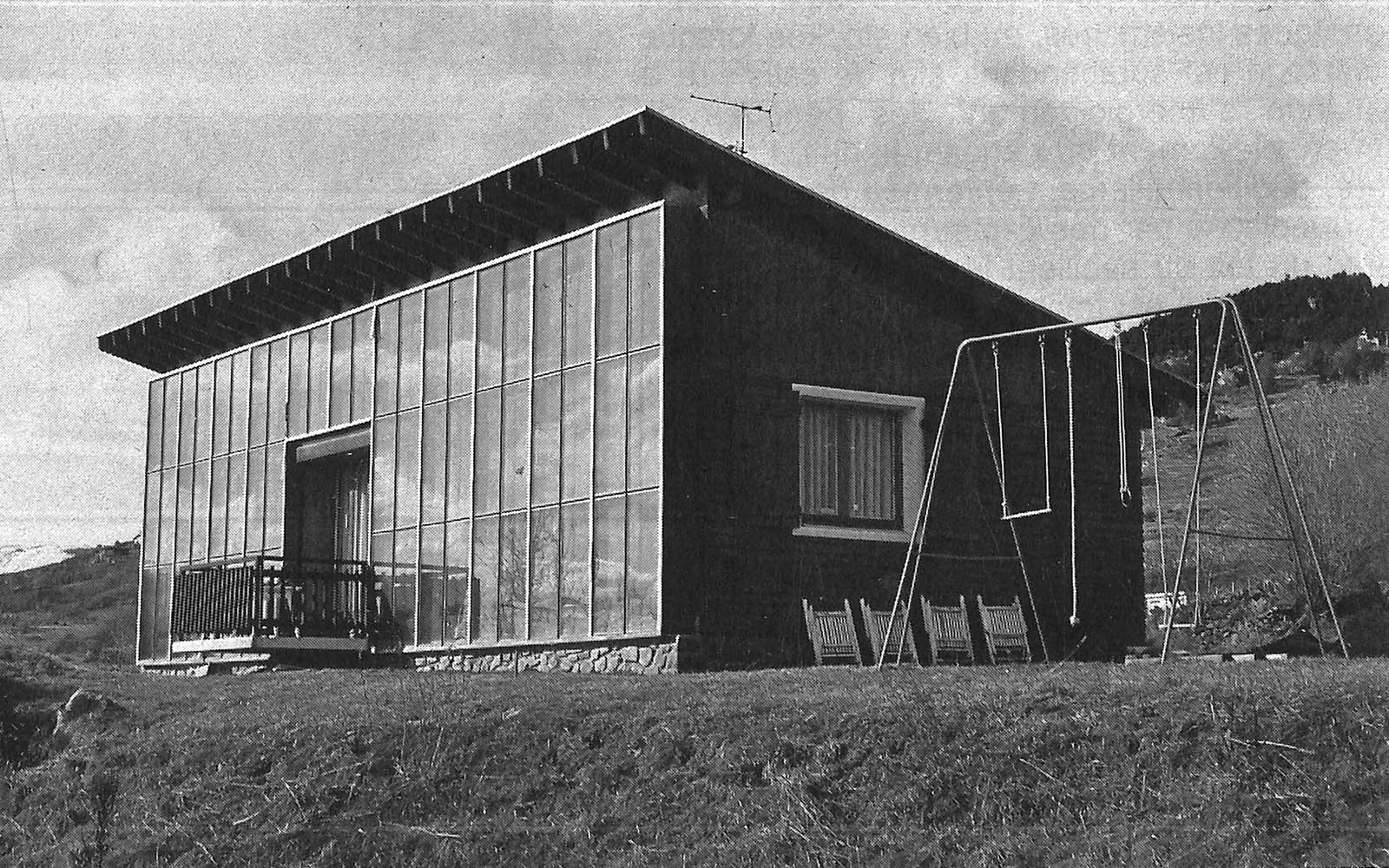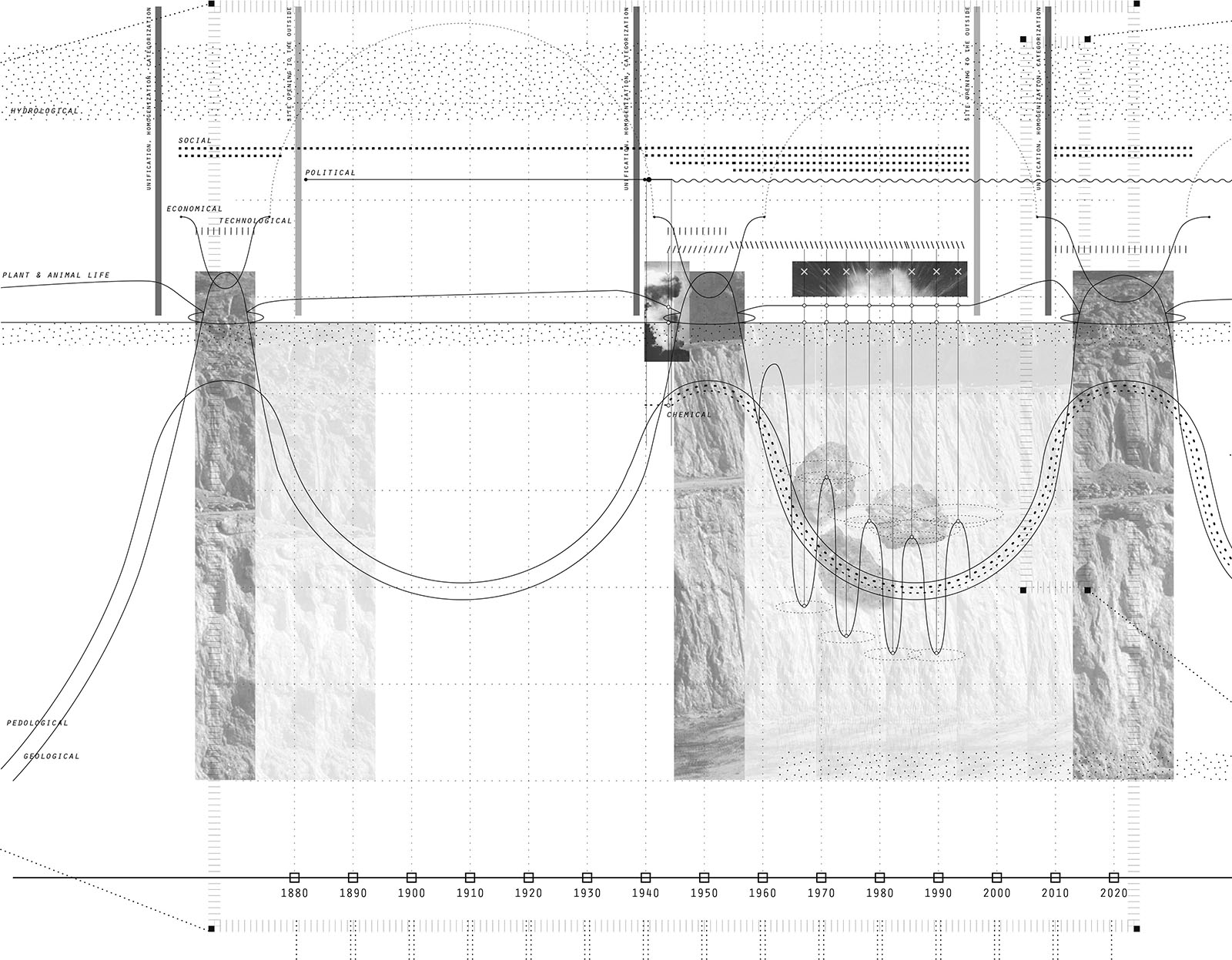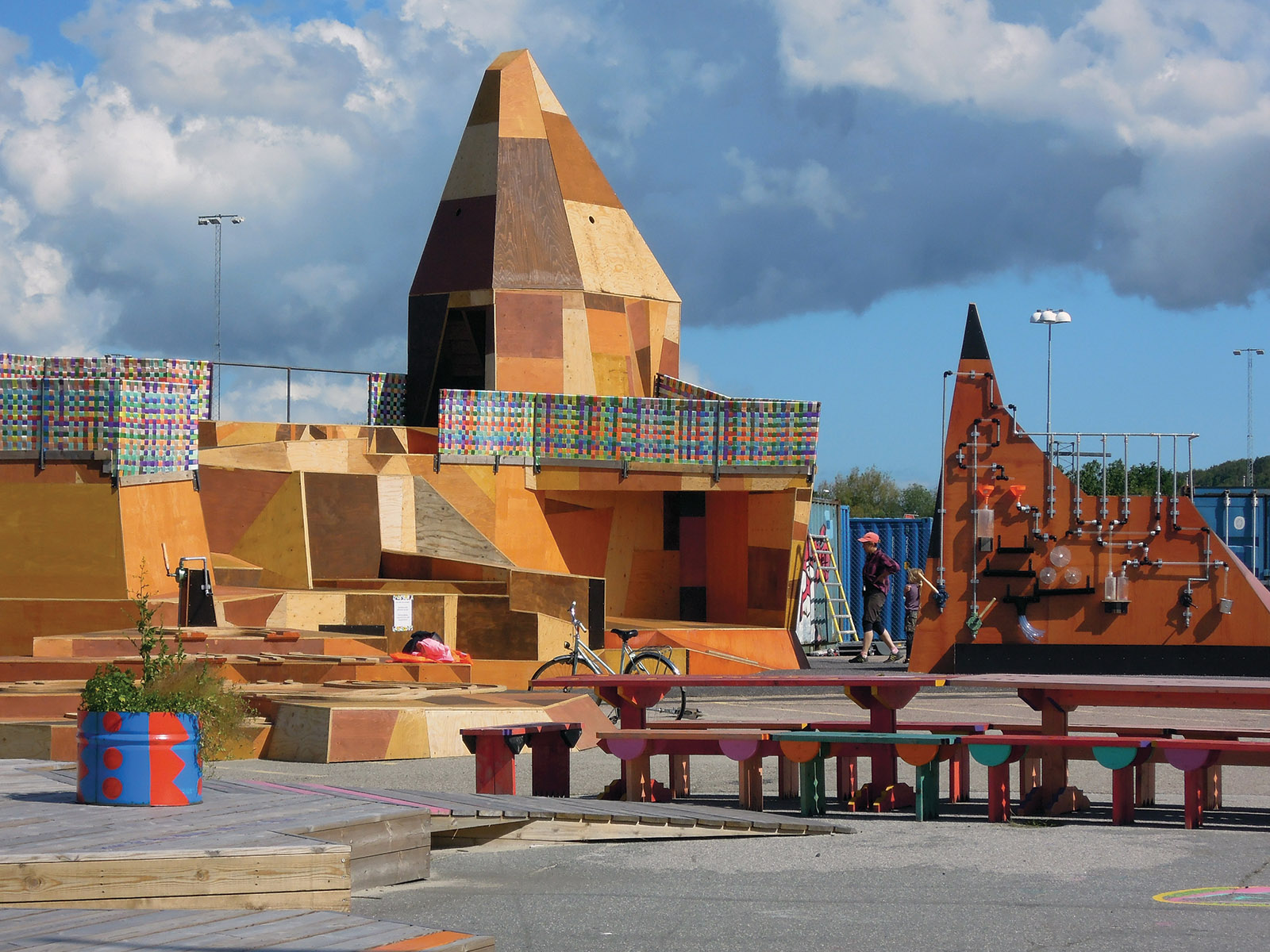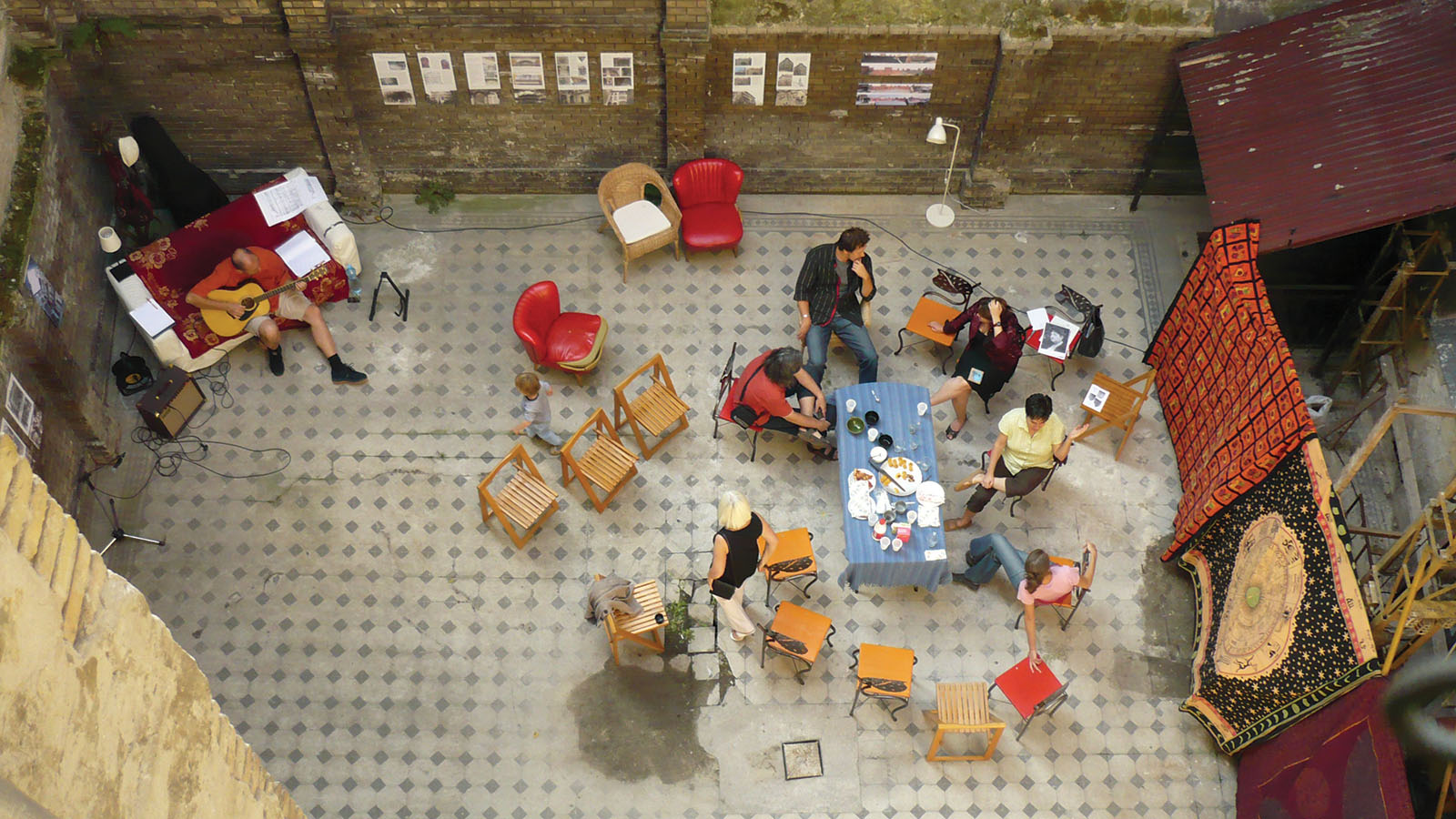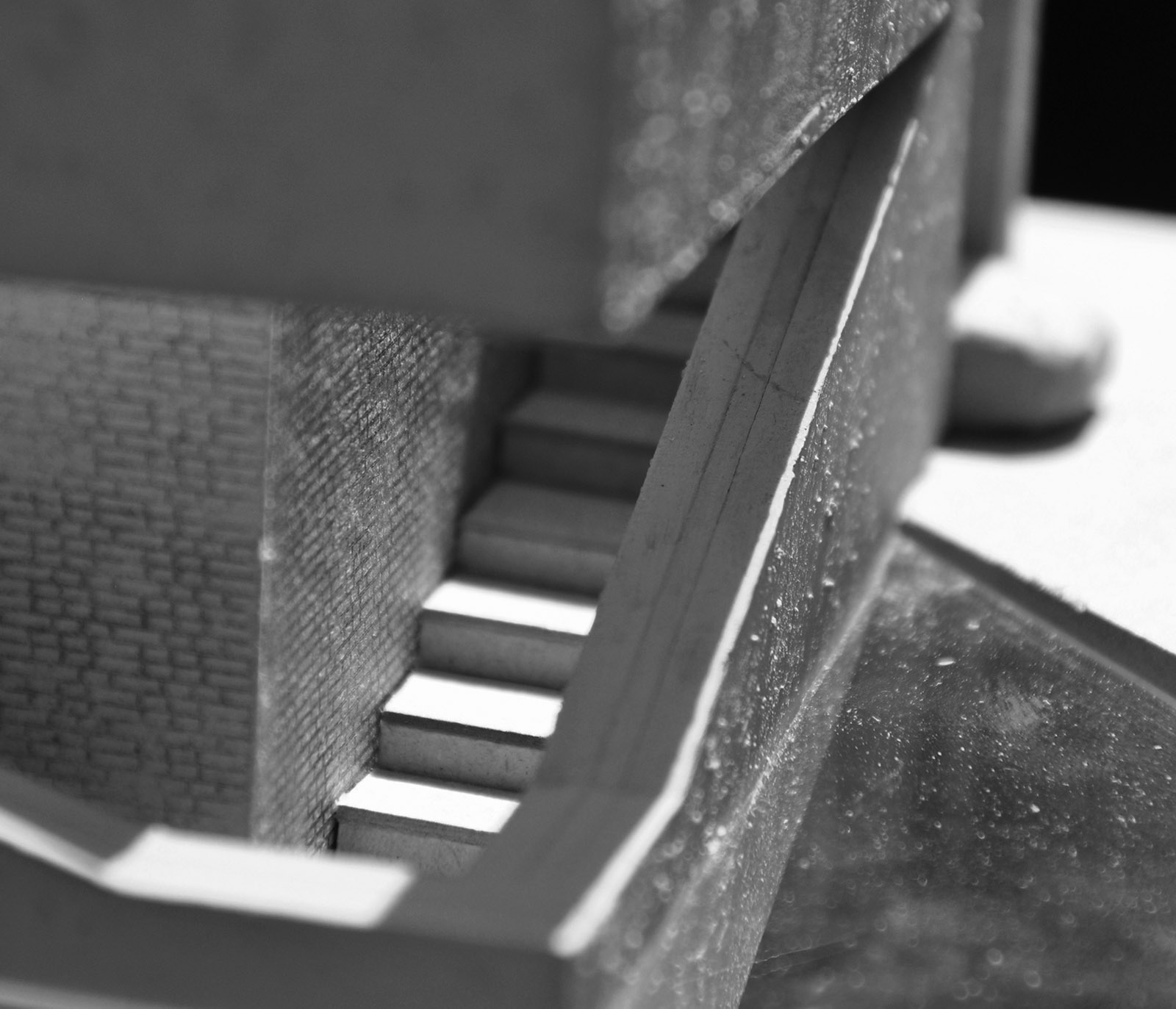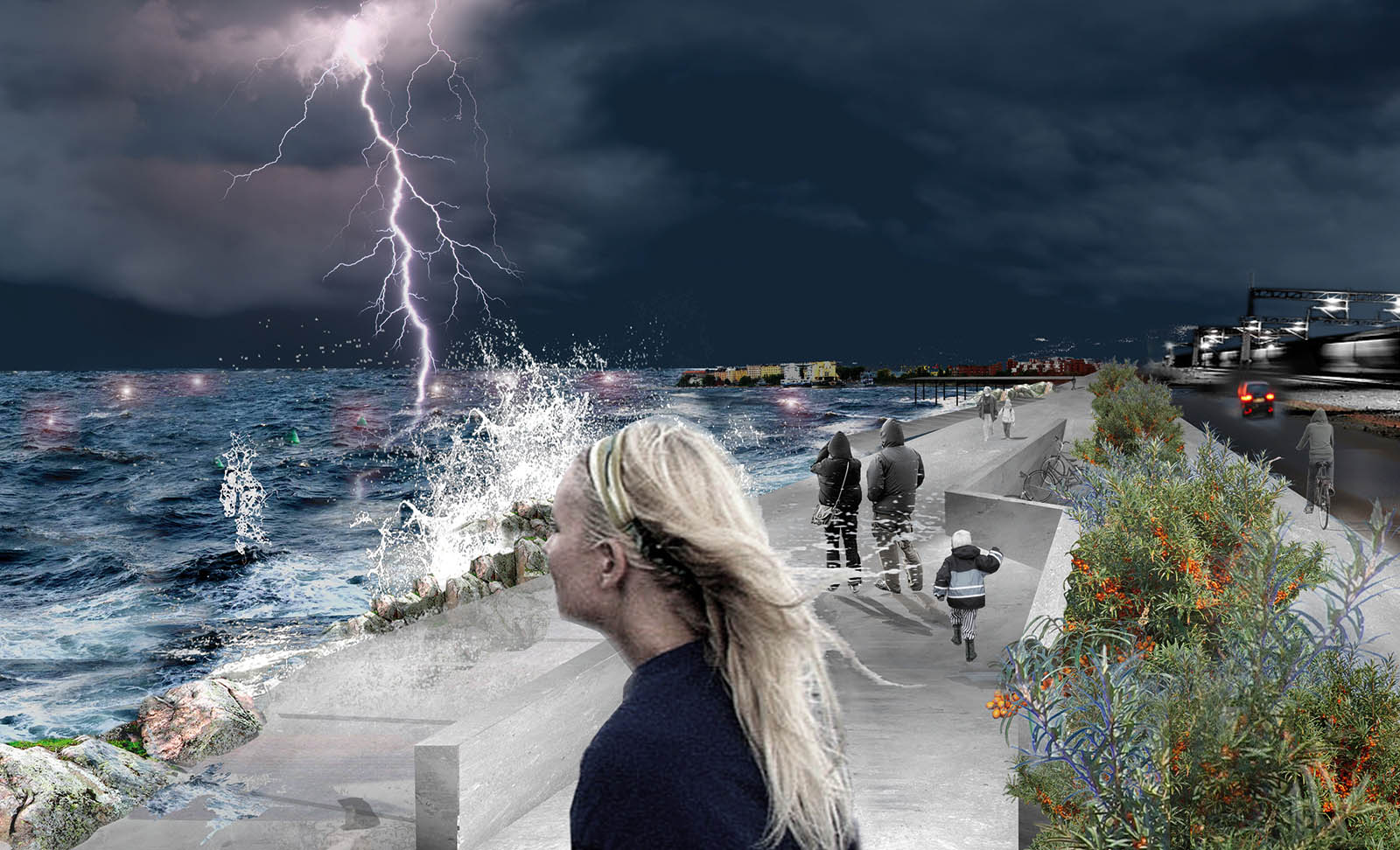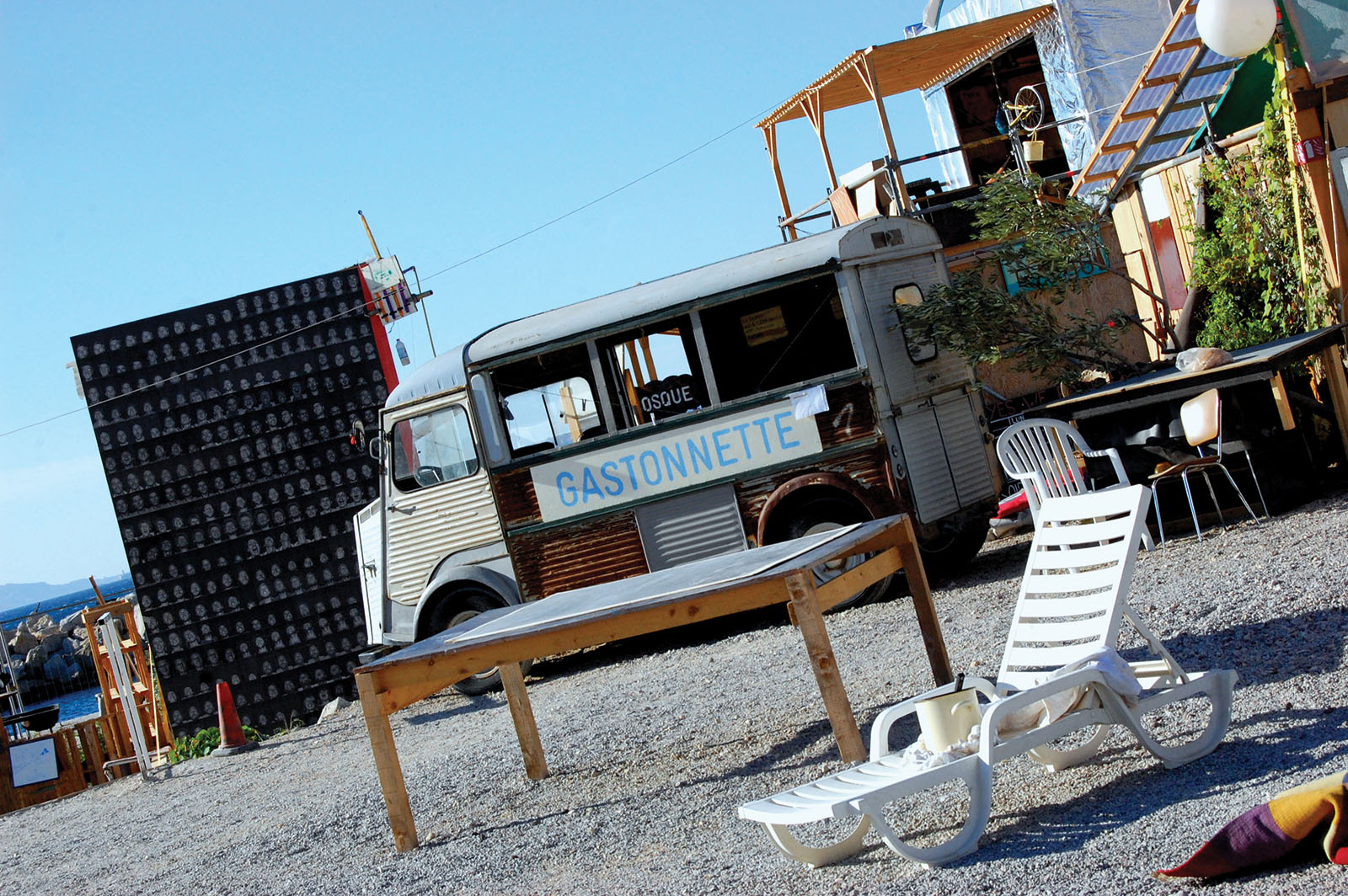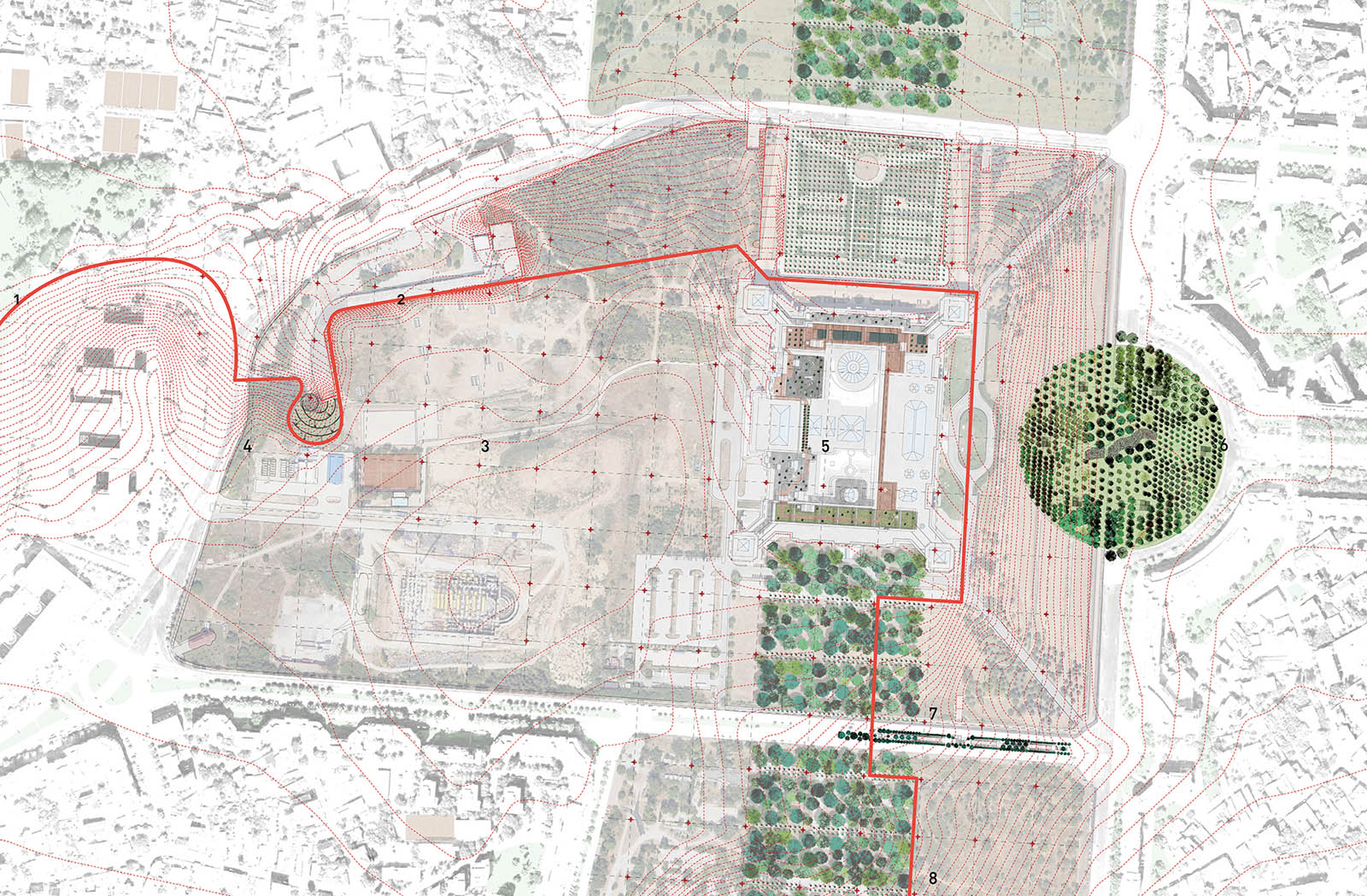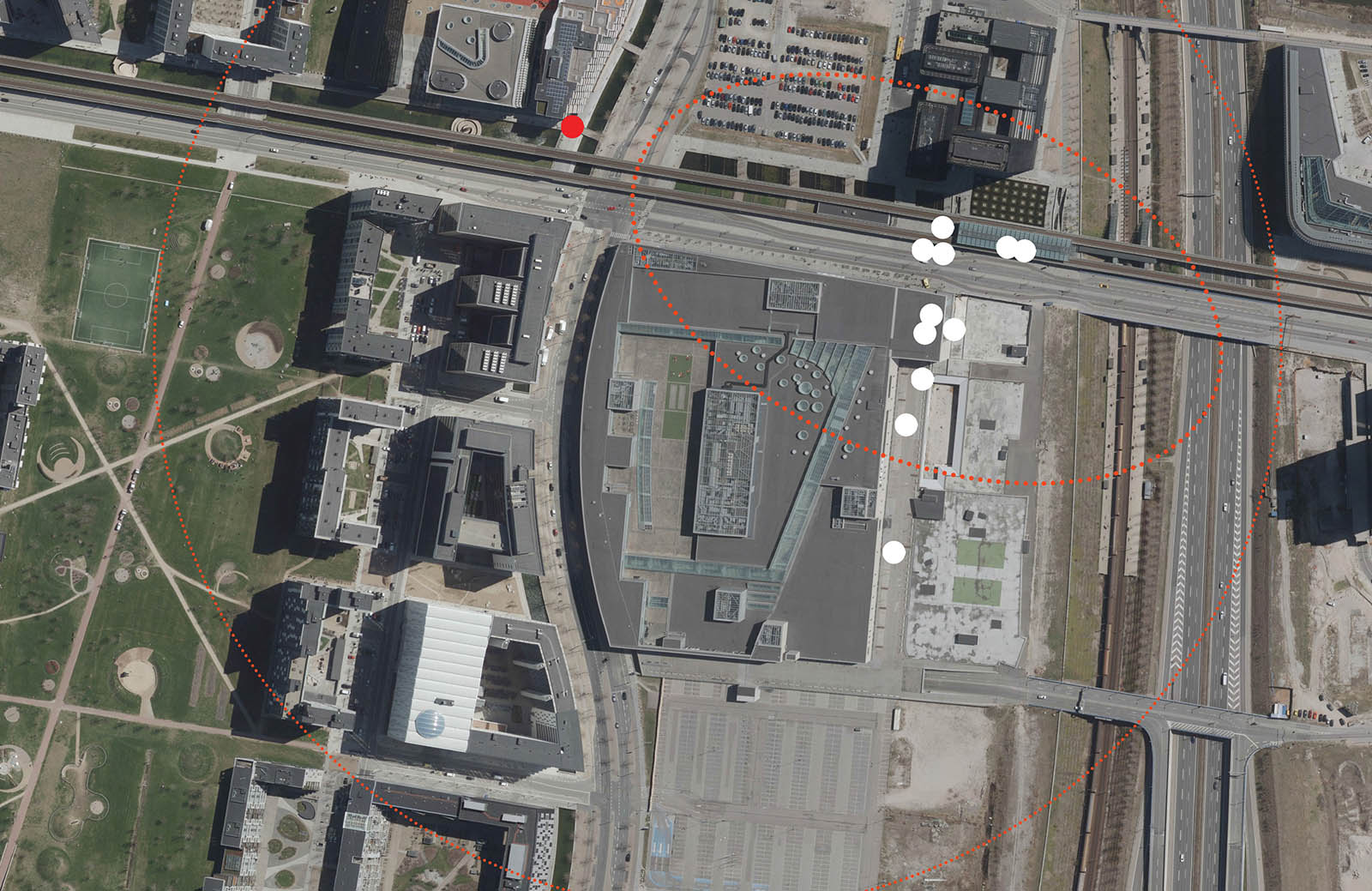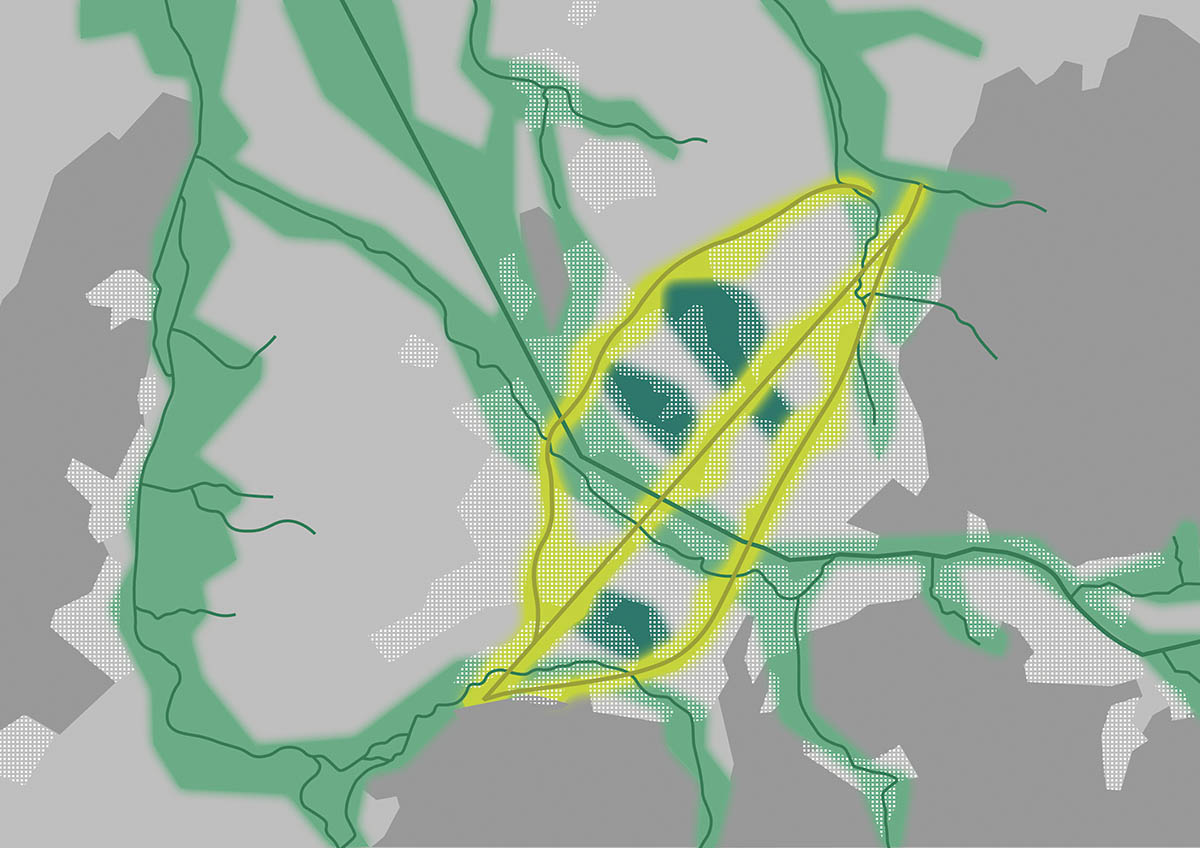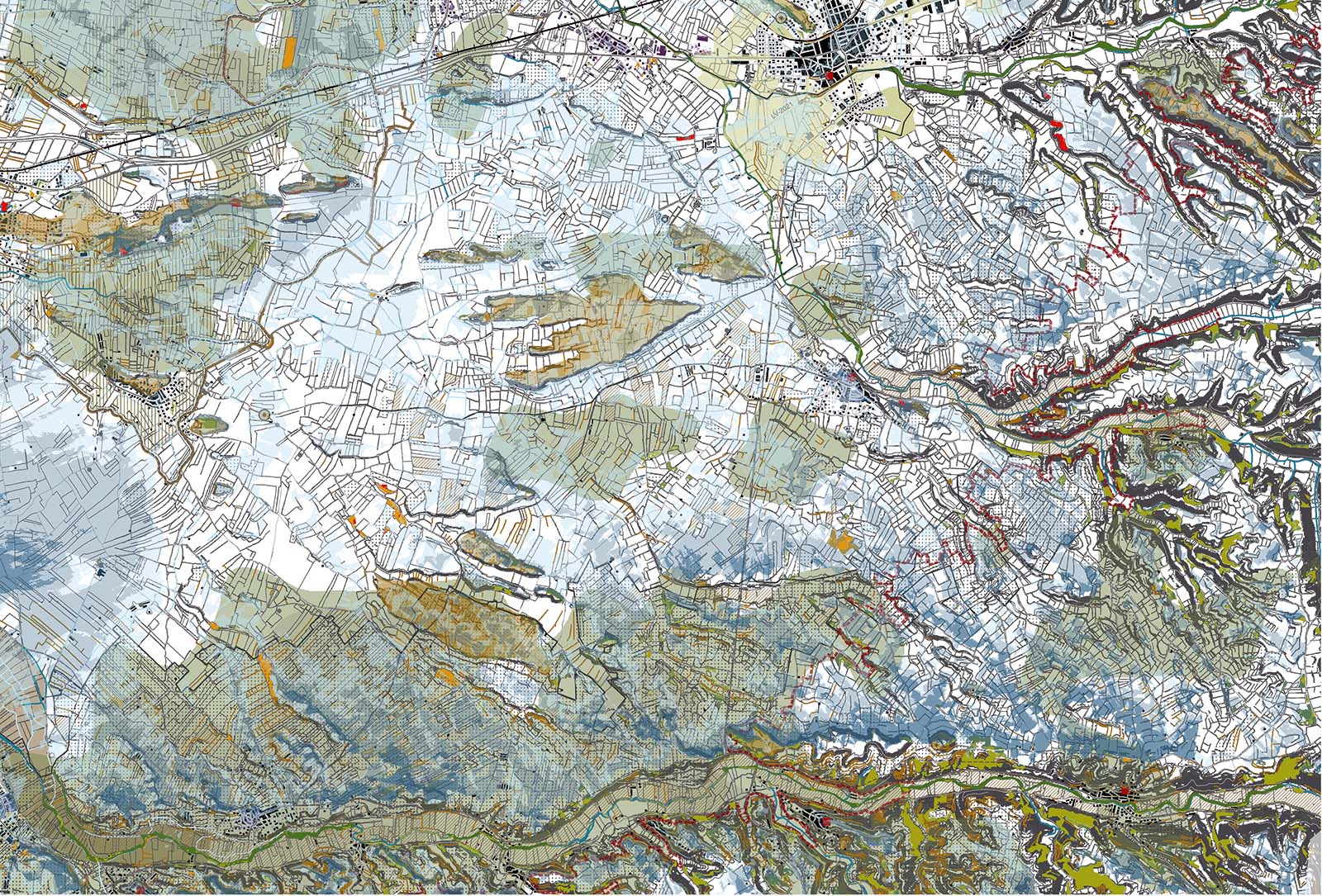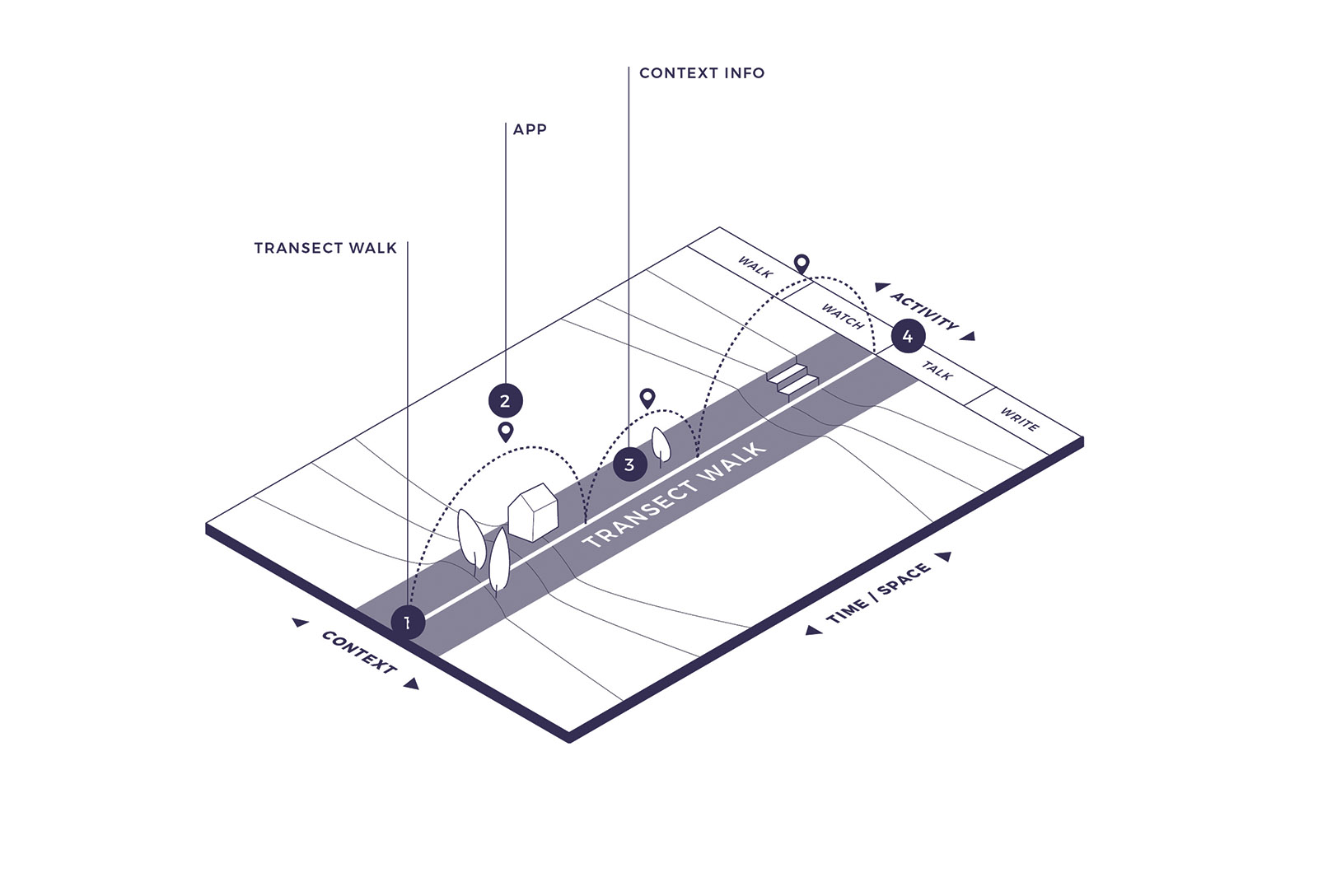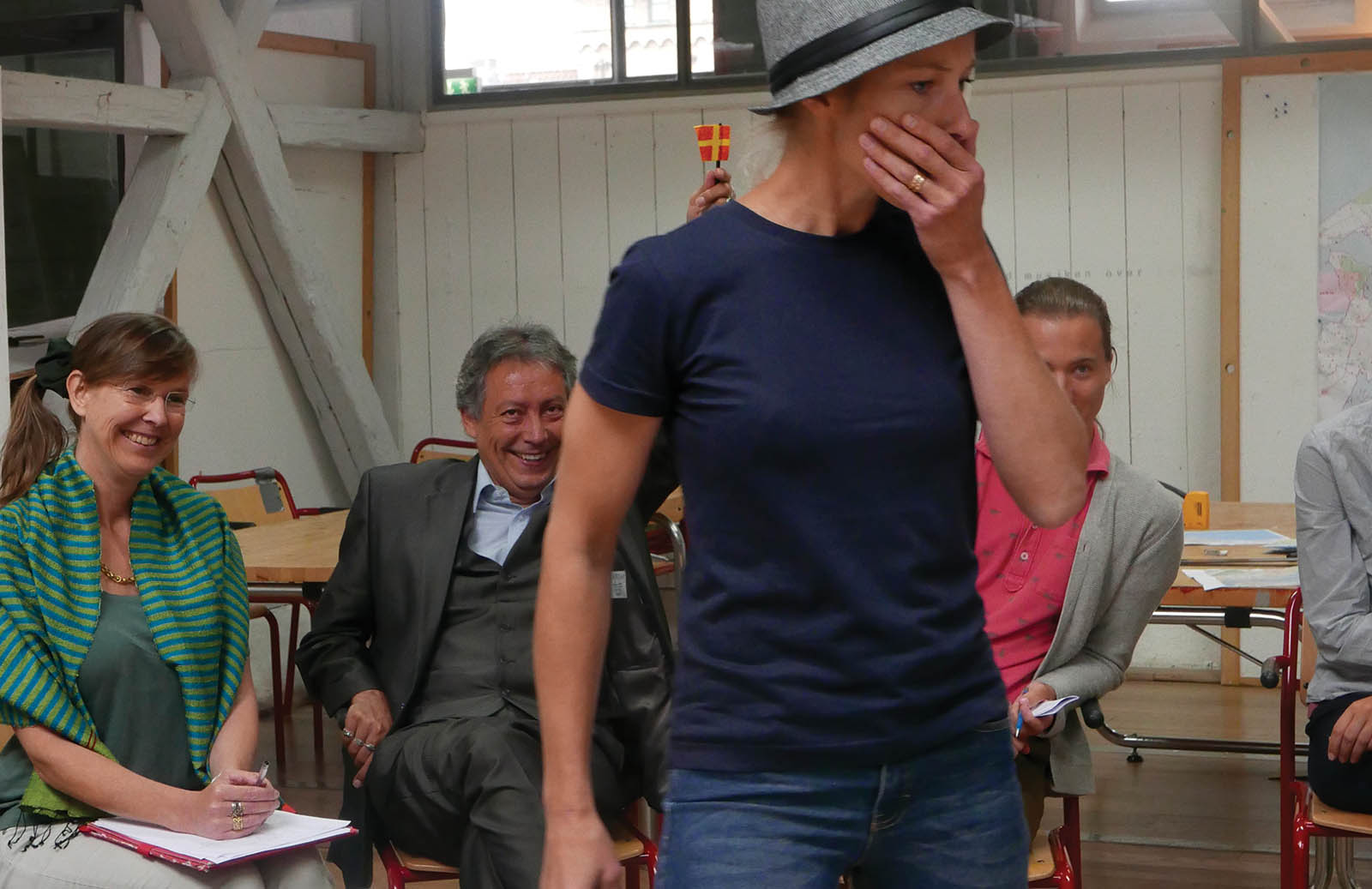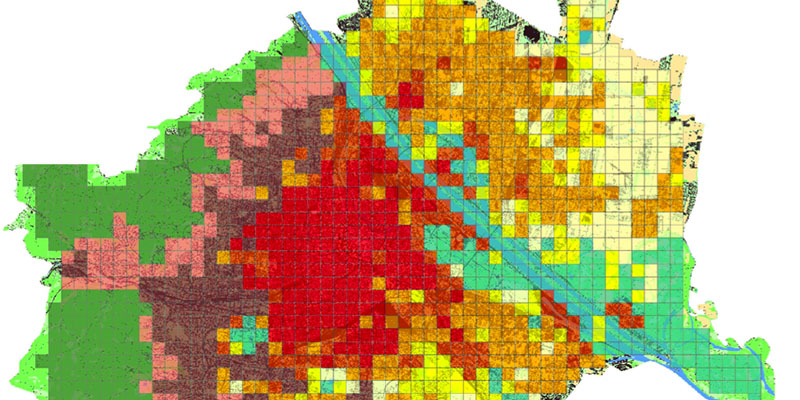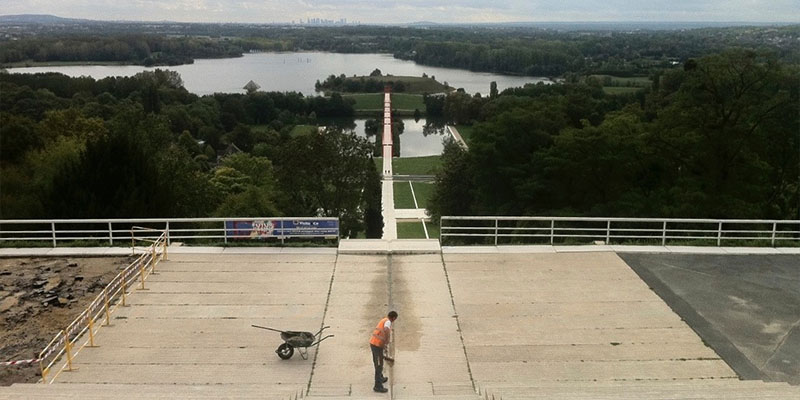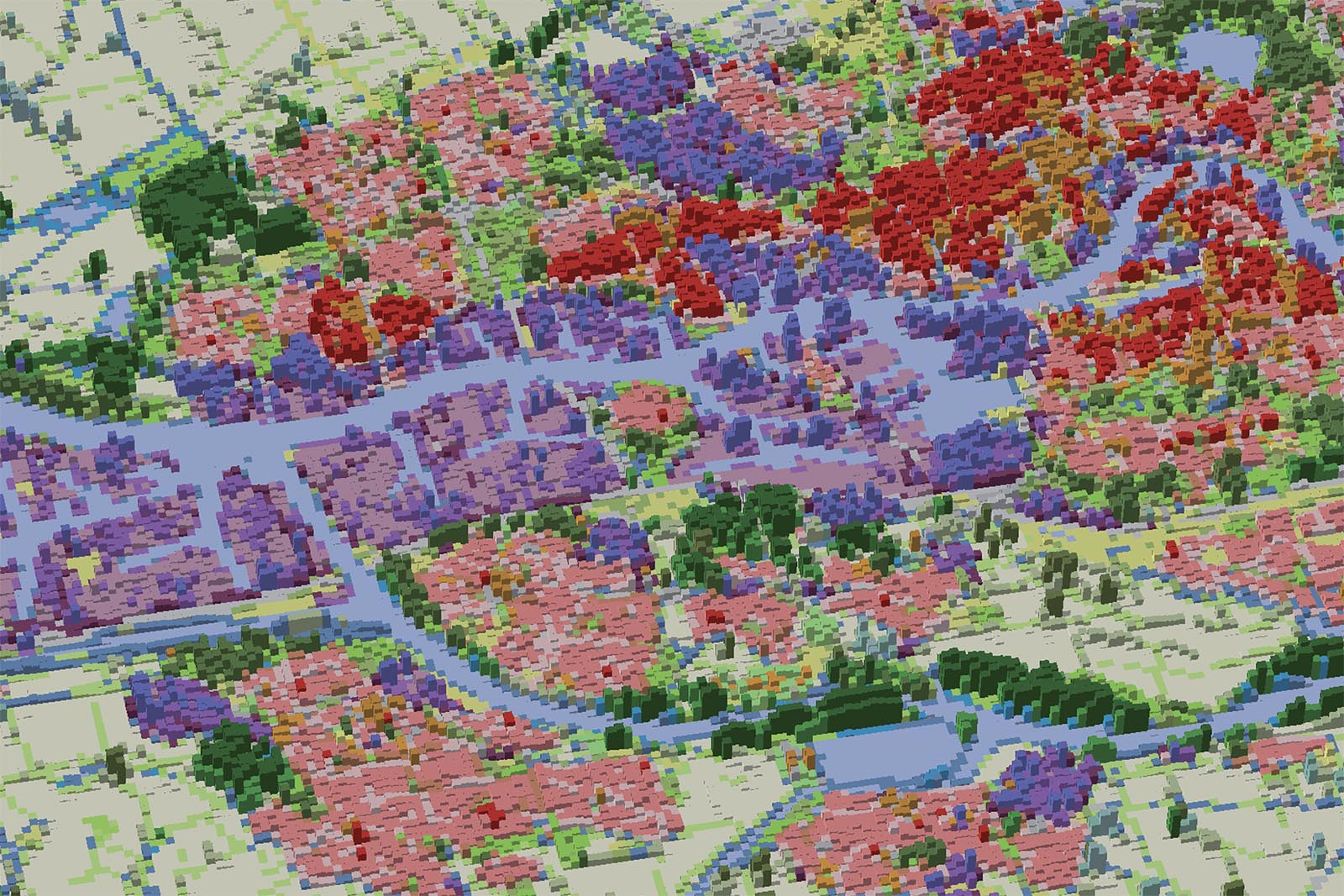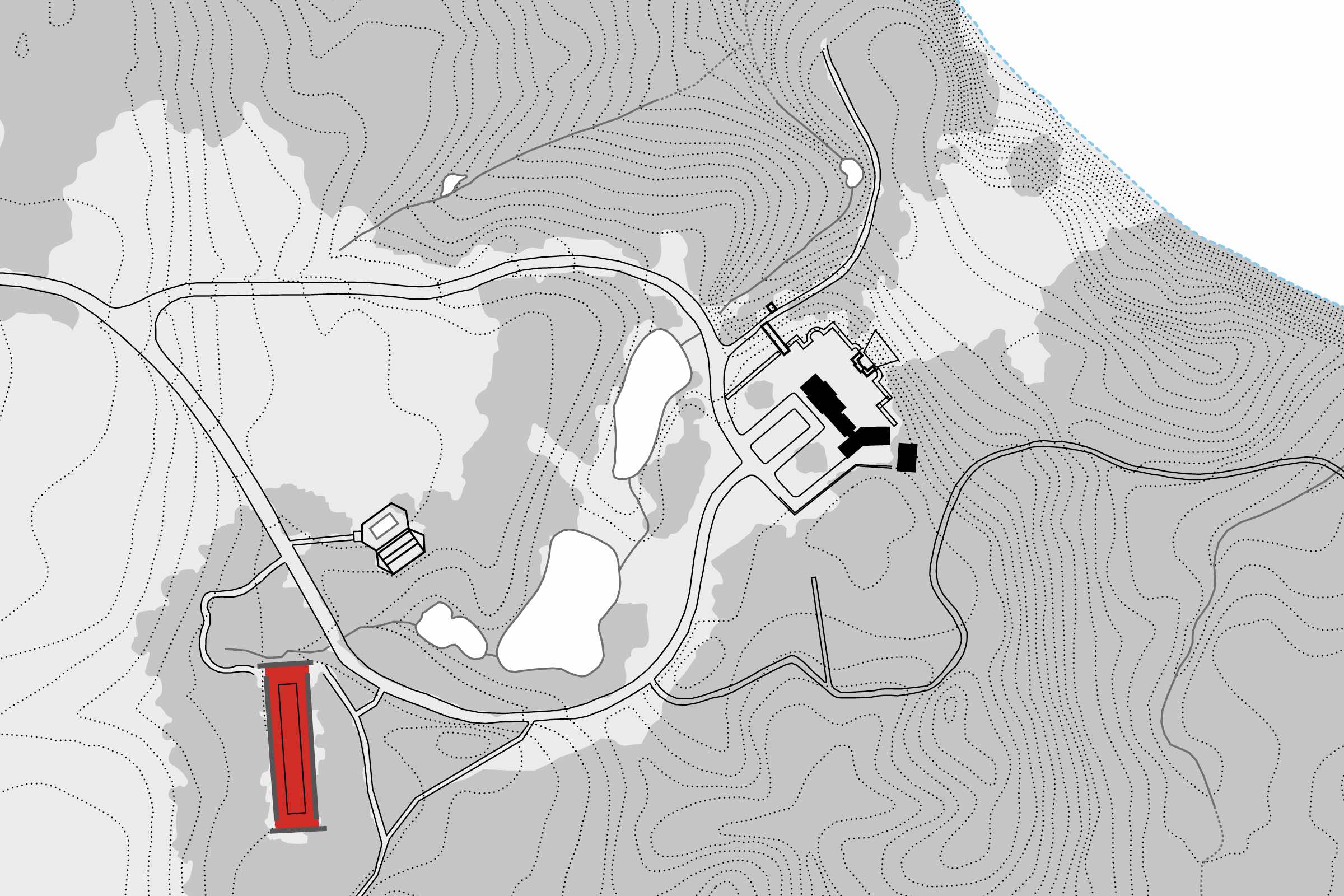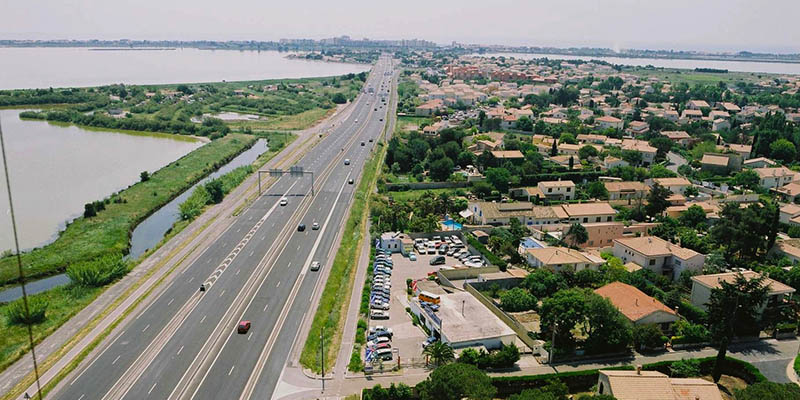Landscape Metropolis
All Items
-
Public spaces emerge through a diverse field of practices and events that combine to make space and create meaning. In today’s design and planning practice, temporary interventions play an increasing role in the creation and rethinking of public space ‘on the go’. In such transitional interventions, ‘the project’ is both physically and symbolically created through entangled actions of design with somewhat non-designed and informal practices and DIY aesthetics, as well as various narratives and modes of communication.Temporary public spaces thereby challenge established ways of evaluating...
-
Danish visual artist Kirstine Autzen portrayed Superkilen as it is in Summer 2017. For Autzen, photographing a public space means taking in impressions, and at the same time making images that convey these impressions in a strictly visual manner: grabbing the camera precisely when someone or something does something. Autzen states that photographing in itself is a kind of analysis. She traversed the area several times, waiting for the opportunity to photograph a specific situation with, for instance, the right light or passers-by, and in doing so, she starts to feel...
-
On January 2016, a joint consortium of the Flemish and Brussels Chief Architects published Metropolitan Landscapes. Espaces ouvert, base de développement urbain/Open ruimte als basis voor stedelijke ontwikkeling. Based on the assumption that open spaces have the potential to spur and structure future urban development and surpass administrative boundaries, Metropolitan Landscapes presents research by design, authored by four prominent design firms with the intention of jumpstarting conversations about a shared spatial vision for the fragmented territory of Brussels and its periphery. In...
-
This article explores the intersection between the indiscernible forces of urbanisation and the materialisation of architectural form. Taking the design of architectural concept for an Accessory Dwelling Unit (ADU) at Råå in Sweden as an applied research project, the article argues that new techniques are needed to analyse interactions between artistic intentionality and indiscernible forces, and to critically evaluate their impact on the form of buildings and places. The ADU is an emergent building type. Dubbed Unit C at Råå, the ADU was designed to be attached to a neo-classical villa....
-
Increasingly celebrated, often without questioning, “green architecture” calls for a substantiated discussion. This article explores how design critique can contribute to the thinking and practice around green architecture, particularly green facades, which are growing in number and significance. How can green facades be critically discussed, beyond the dominating glossy project presentations and quantitative measurements of technological and ecological aspects? This article studies the green facades in the architectural competition, Oluf Bager’s Plaza, 2016, in Odense, Denmark, using...
-
During the 1970s, before and after the international oil crisis of 1973, some European architectural periodicals were critical of standard construction methods and the architecture of the time. They described how architects and engineers reacted to the crisis, proposing new techniques and projects in order to intervene innovatively in the built environment, using energy and natural resources more efficiently.
This article will provide a critical analysis of the role of architectural magazines of the time, describing the technological innovation of the Trombe Wall in Europe. It...
-
In an age when it is becoming increasingly apparent that disturbed sites (or any other sites for that matter) can never be fully managed, nor can their future development be entirely predetermined, this paper looks at disturbed sites’ landscape as a complex and metastable system. While it deals with disturbed sites in particular, more broadly it aims to encourage a general re-examination of landscape design that relies on the world in harmonious balance and the experience of visual pleasure, which, according to long-established structures, may please or offer timeless experiences...
-
This design critique explores how a top-down approach of conventional planning coincides with a do-it-(y)ourself project that evolved from the site and is facilitated by a designated mediator working within in city administration with the purpose of bridging the city’s disconnected departments. Hence, the project called Jubileumsparken 0.5 was instigated in 2013 as a place making project in concurrence with urban planning undertakings in order to facilitate a redevelopment of the harbour area of Frihamnen in Gothenburg, Sweden. The purpose of this ongoing...
-
The presented strategy reflects on the theme of sustainable urban regeneration, focusing on the importance of the role of public spaces in creating liveable cities. The theoretical background of the strategy deals with the changes taking place in the fields of public art and urban rehabilitation methodologies. The parallel drawn between the evolvement of the two fields leads to the introduction of a method which integrates public art interventions into the process of urban rehabilitation. Public art interventions become platforms that enable people to take an active role in creating and...
-
This article explores a site-specific, narrative approach to placemaking in order to reveal ways of reading and reacting to spatial atmospheres. The contribution presents an MSc Architecture project that results in the design of three particular places on the fringes of the Dutch urban landscape by means of utilizing a narrative approach to reading and analysing the existing site-specific atmospheres. The three architectural follies designed within the landscape present opportunities for the insertion of narrative through experience, illuminating the contents within the existing context....
-
The article addresses the theme of ‘particular places’ in the contemporary landscape metropolis by focusing on the temporal, climatic and geographic specificity that determines each place as unique. In particular, it explores how design can support the appreciation of a ‘particular place’ by enhancing the readability of its temporal, climatic and geographic constituents through an engagement with local weather phenomena.
The article considers the capacity of design to foreground the particularity of a place by connecting to its weather through a critical reading of SLA’s...
-
Since its first issue, SPOOL has used the term ‘landscape metropolis’ to address urban formations beyond the traditional city that – despite their increasing ubiquity - still lack in-depth attention from the perspective of aesthetic appreciation, designerly concepts of development, guidelines for planning and governance, and design theoretical apprehension. The prefix ‘landscape’ is used to describe attention to these topics through the lens of landscape architecture, and offers, we feel, some novel potentials: in considering the metropolis as a cultural phenomenon that is constructed...
-
The presented paper builds on theoretical language borrowed from post-modern philosophy and humanist geography to investigate particular features of the artistic and participatory “Yes We Camp!” The article emphasizes a mutually reinforcing relationship between static properties of the site – its spatial organization, built environment and selection of materials – and its dynamic characteristics – social interactions, organizational form and the emotional resonance evoked in people. The paper shows that place particularity is symbolically conveyed by the spatial organization and built...
-
Since its first issue, SPOOL has used the term ‘landscape metropolis’ to address urban formations beyond the traditional city that – despite their increasing ubiquity - still lack in-depth attention from the perspective of aesthetic appreciation, designerly concepts of development, guidelines for planning and governance, and design theoretical apprehension. The prefix ‘landscape’ is used to describe attention to these topics through the lens of landscape architecture, and offers, we feel, some novel potentials: in considering the metropolis as a cultural phenomenon that is constructed...
-
In this paper, I introduce the concept of the frame. The mechanisms of framing are a strategic and conceptual tool for dealing with the complexities of place in terms of site specificity. Starting from both a theoretical understanding of the frame in terms of what it does rather than what it is, and from a specific site — the territory surrounding the Palace of the Parliament in Bucharest, Romania — I investigate ways of working with a contested territory in a site specific, open-ended way. As the locus of a large-scale urban project for a new civic centre initiated in 1984 by...
-
This paper investigates the theme particular places from the perspective of ‘quiet places’, by examining potential links between material and immaterial qualities of four distinct typologies of urban spaces in the landscape metropolis, and offering five thematic lenses to sharpen our view for the particular. While the relationship between green spaces and restorative qualities for humans has long been acknowledged, the present research investigates other types of urban spaces, not focusing on ‘green’ or dB ratio as such but instead on confluences of soundscape, cityscape, flowscape, and...
-
Experimental walking can be used to identify particular places, design strategies and spatial visions for urban landscapes. Walking designers can explore sites and, in particular, their temporal dynamics and atmospheric particularities – both essential elements in making particular places. This article illustrates the benefits of this method, using the changing German city of Freiburg as an example.
-
This paper argues that the opening up of landscape analysis to variables that exceed the 'tangible' or traditionally 'parameterized' values provides alternative access to the specificities of the landscape. In particular, the concept of 'atmosphere' as a particular dimension of the embodied experience, is proposed as an operative vehicle for the enrichment of the cartographic interpretation of the landscape. By placing the emphasis on atmosphere in terms of its causes, rather than its effects on our emotional sensibility, cartography enhances the identification of the particular by...
-
This article investigates how experimental forms of urban mapping can reveal the particularity of places in non-standard urban situations with the intention of moving beyond the reductivism of still-dominant modernist modes of mapping and associated forms of planning. In order to do so, it reports on the emergence of a methodology involving transect walks, with the purpose of mapping the peculiarities of cultural landscapes. The study is located in cities and communities in the Arctic that are undergoing rapid transformation and are in urgent need of new conceptual approaches capable of...
-
Based on a Travelling Transect approach, this paper explores how ample interpretations and opportunities for new thoughts about sites are developed, especially when these sites are explored along a combined material and immaterial predefined linear path that is distorted, challenged and redefined by bodily encounters and sensations on site. By using the Travelling Transect as an approach to do research and develop new understandings of sites, possible overlooked qualities manifest themselves in a series of registrations collected or inspired by encounters on site. Illustrated through a...
-
The European Landscape Convention implies a requirement for signatory states to identify their urban landscapes which goes beyond the traditional focus on individual parks and green spaces and the links between them. Landscape ecological approaches can provide a useful model for identifying urban landscape types across a whole territory, but the variables relevant for urban landscapes are very different to those usually addressing rural areas. This paper presents an approach to classifying the urban landscape of Vienna that was developed in a research project funded by the Austrian...
-
Many studies have addressed landscape preferences in rural settings, identifying key aspects and elements of the visual landscape important for people’s appreciation. Information about these characteristics of landscapes has then been used as bases for indicator frameworks linking measurable indicators to landscape aesthetic theory. However, there is a need to expand and develop these frameworks to be relevant for assessment of metropolitan landscapes. Nine key concepts, identified by Tveit et al. (2006) and Ode et al (2008), in existing frameworks for visual landscape assessment,...
-
This paper presents a theoretical and methodological framework for a comprehensive landscape characterization, focussing on the largest and most complex urban realm: the metropolitan region. Landscape character has in recent years emerged as a new paradigm to understand, monitor and evaluate cultural landscapes undergoing change. The scope of characterization methods however, is by and large limited to the non-urban realm. In physical terms, the border between the urban and non-urban realms is becoming increasingly diffuse, particularly in metropolitan regions.
Metropolitan...
-
The heterogeneity of the contemporary metropolitan landscape has led to a multiplicity of intermediate spaces, in between and within the different tissues of the metropolitan landscape. These interstices can provide favourable conditions to be transformed into gardens. What design instruments can be discovered for these gardens to address the characteristics of the interstice? And what is the value of doing so? In this essay three contemporary examples are compared, which explicitly address the different metropolitan landscapes in which they are located.
Paley...
-
Identification and assessment of strategies for the conservation and multifunctional development of green open space in the urban fringe of European urban regions is a challenge to both the academic and the real life world. Within the EU funded research project PLUREL – Peri-urban land use relationships – ‘Strategies and sustainability assessment tools for urban rural linkages’, we developed a methodology for international comparison of regional strategies that considers the policy context at supra-regional level. This methodology helped to explain the reported impacts of strategies. For...
